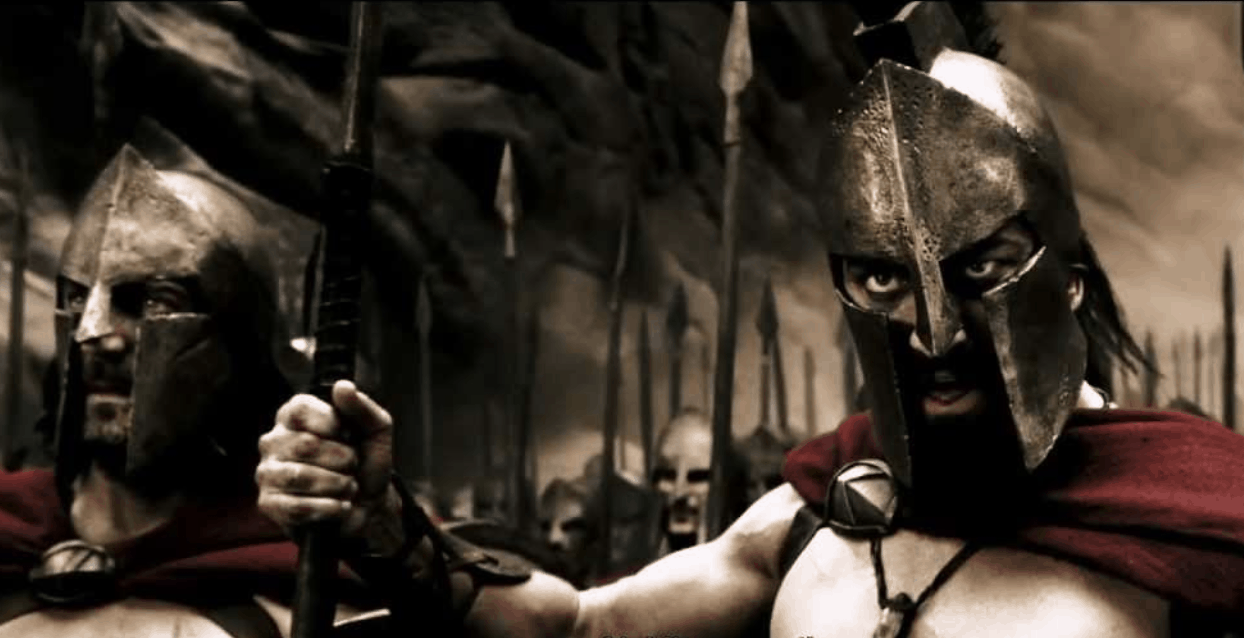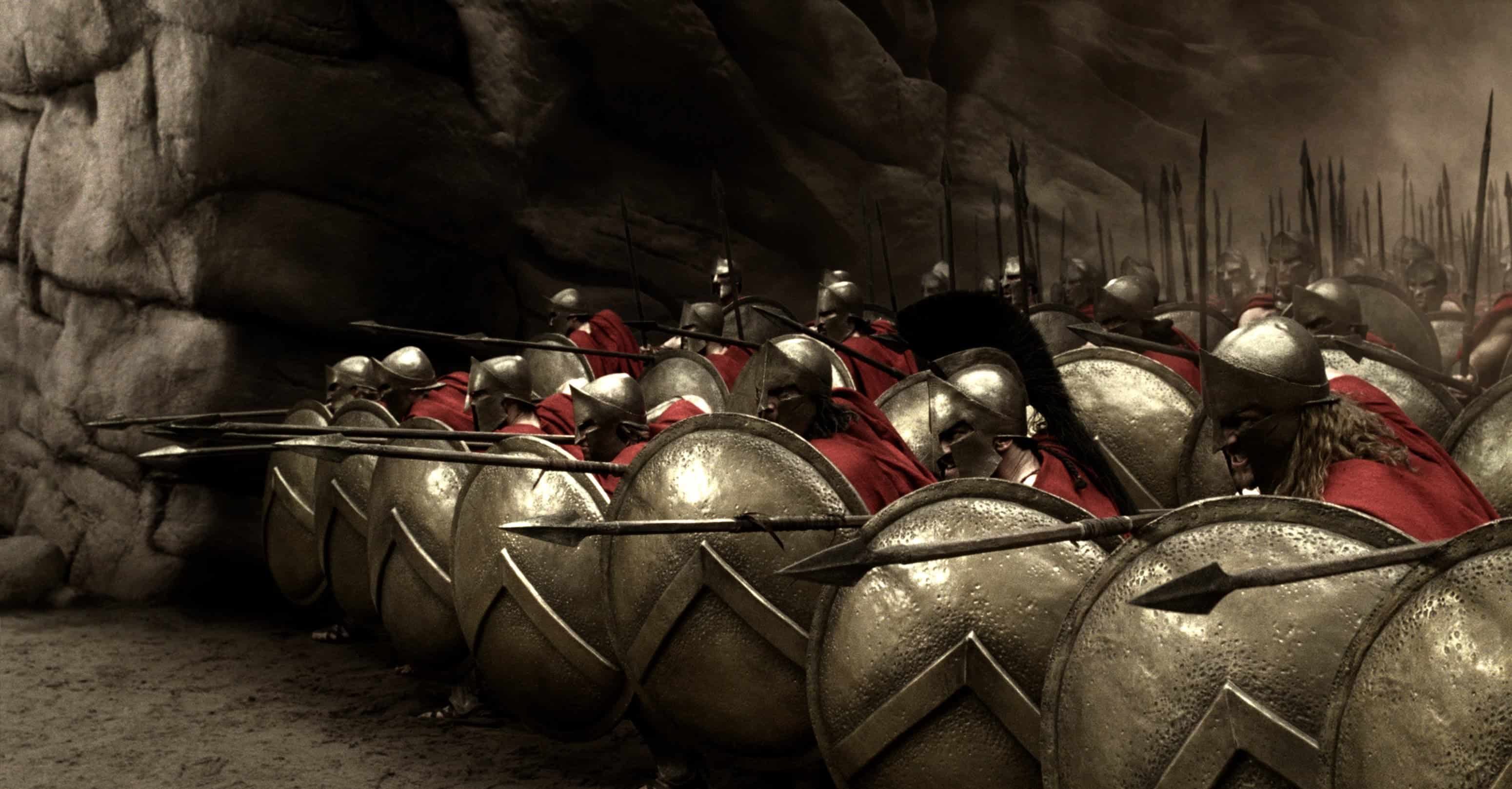It is not Hollywood’s job to educate you.
If you did not pay attention in history class, don’t expect Ben Affleck to save you with a jaunty, factual refresher on the Japanese attack on Pearl Harbor that plunged the United States into World War II.
If you’re expecting to watch the 2001 Affleck and Josh Hartnett vehicle Pearl Harbor and learn all you’d need to know to ace a quiz on that day which will live in infamy, you will be in line for an F.
If you want facts, go watch PBS. If you want “facts” then, by all means, let Michael Bay spin you a yarn.

Even historic occurrences with extensive documentation about them get warped around the edges when they serve as the source material for featured films. Things that really took months end up getting done in hours just to lend more urgency to the proceedings. Antagonists get invented out of whole cloth. So do best friends and romances.
“The problem with that phrase ‘based on a true story,’ it is an extremely loaded claim,” says Scott Metzger, a Penn State associate professor of education who teaches courses on gaining historical literacy through media. “On its own, it kind of gives license to almost anything. It’s not quite as bad as its cousin ‘inspired by real events,’ but ‘based on a true story’ implies there has to be some adherence to a commonly recognized reality, but with flexibility.”
I do not believe American films, especially when they’re based on a true story.
— Omar Al Tamimi (@tamimiomar07) October 7, 2018
That doesn’t necessarily mean movies that take liberties with the real events they’re based on have to be bad, though. This is entertainment, after all. Not education.
Here are eight examples of “based on actual events” movies that got a little loose with their research, with varying degrees of effectiveness.
1. JFK (1991)
The Story: What really happened that tragic day in Dallas in 1963, with President John F. Kennedy, a motorcade, and some shots heard round the world?

Director Oliver Stone has an idea or two…some more grounded in reality than others.
The Creative License: A whole lot of stuff. Basically, the film posits an extremely detailed, convoluted plot carried out by multiple government agencies to get rid of the president through lethal means.
But that’s kind of the point of the film. It’s Stone taking what little the government had told the people about the assassination to that point and using that secrecy to suggest the government’s account couldn’t be trusted. The film’s wild theories even prompted a government review of the JFK files and the timeline with which they would be released to the public, bumping it up by 12 years.
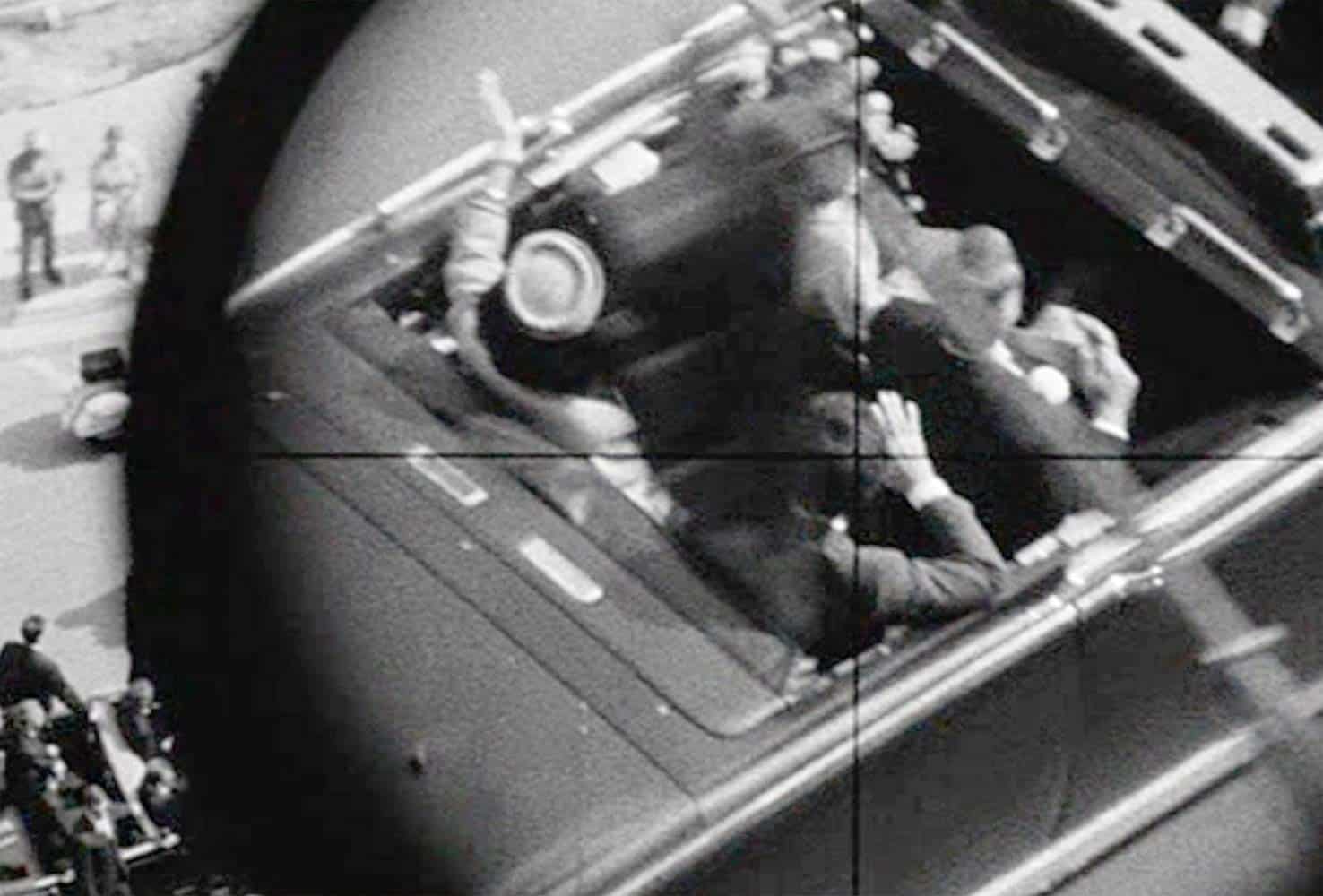
Did it work? A group of Stanford scientists released a study in which they polled JFK moviegoers before and after seeing the film, and they found that the movie “significantly aroused anger and changed beliefs toward accepting the broad conspiracy hypothesis of multiple agents and agencies involved in the Kennedy assassination and its cover-up.”
So if the aim was to freak out a bunch of people with unverified theories, mission accomplished!
2. Braveheart (1995)
The Story: Mel Gibson dons a kilt and an…inconsistent…Scottish accent to play 13th-century revolutionary leader William Wallace, who played a pivotal role in the First War of Scottish Independence.
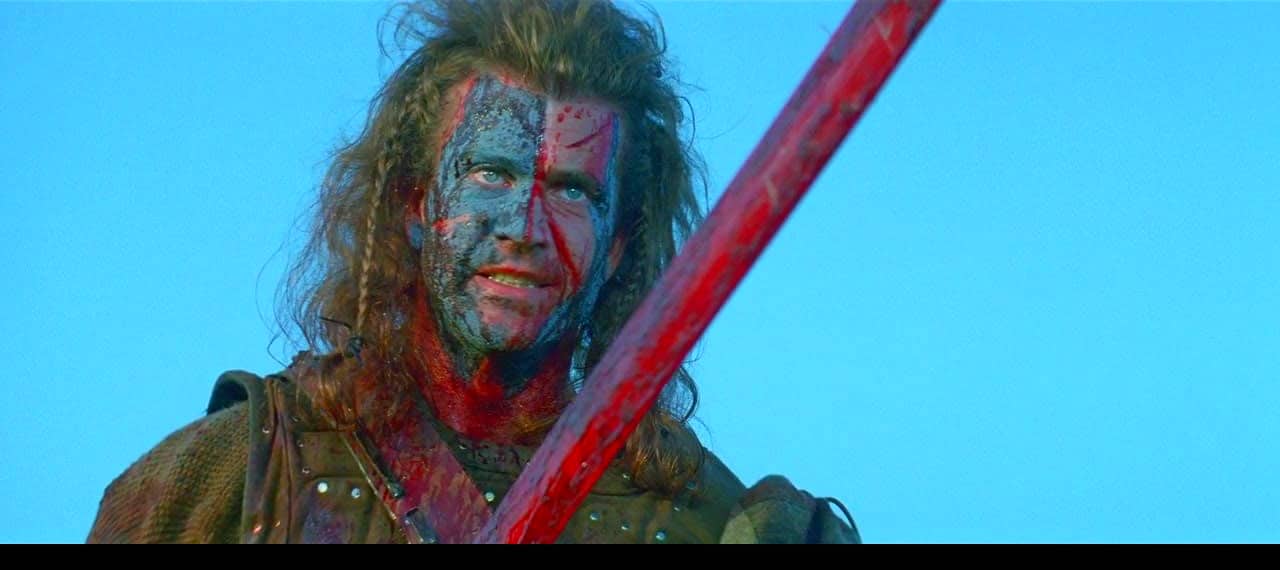
The Creative License: How pivotal, exactly, was that role, though? Some historians suggest that Robert the Bruce was the real central figure. He may even be the “brave heart” of Scottish history. In the movie, Robert the Bruce was treated mostly as a coward who betrayed Wallace.
Oh, Wallace was also Scottish gentry—not exactly a grunting countryside barbarian—and Highlanders weren’t wearing kilts at that point in history. Sorry.
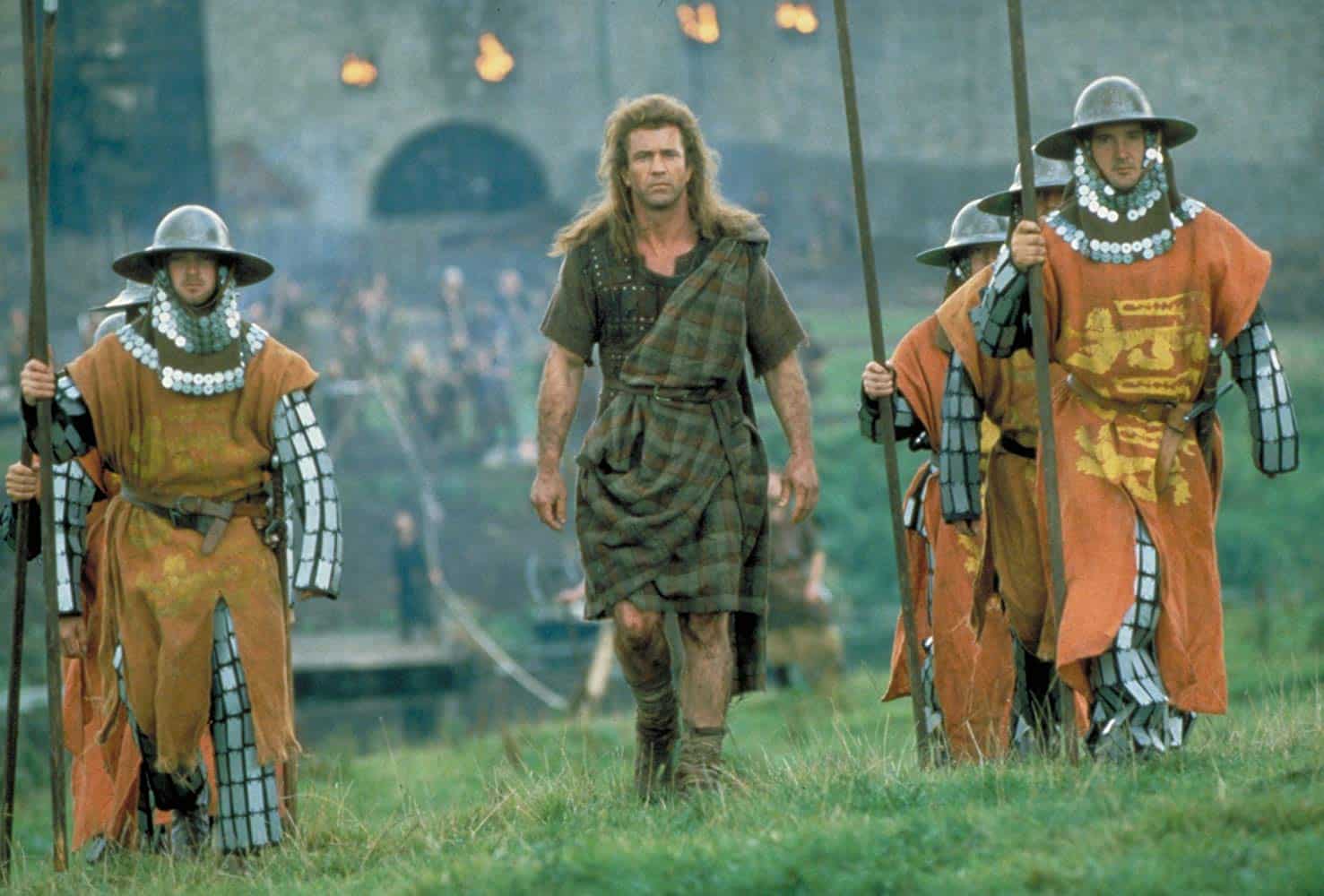
Did it work? Five Oscars would say so. It’s generally regarded by historians as largely a work of fiction, though.
“It is absurdly, nonsensically inaccurate,” says Andrew Larsen, historian and creator of the blog An Historian Goes to the Movies. “One historian found 20 historical errors in the first 30 seconds of the film. There hasn’t even been any dialogue yet, and the movie is making wrong choices. The plot of Braveheart is so laughably wrongheaded. It just doesn’t bear any resemblance to the actual events.”
3. Pocahontas (1995)
The Story: A Native American princess meets English colonist John Smith and the two fall in love, even though they’re from vastly different worlds. She manages to save her beloved from execution and broker a peace between her tribe and the English.
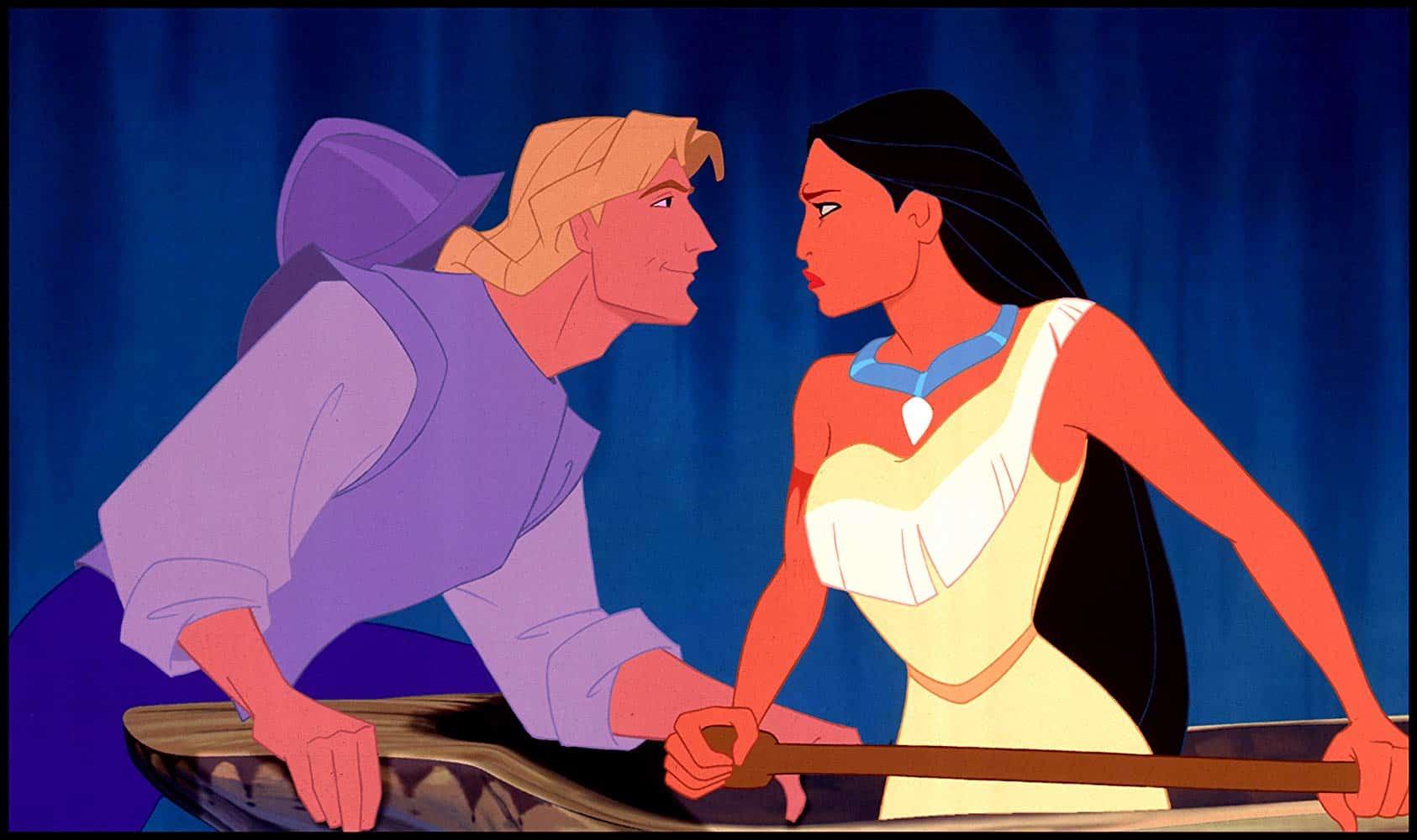
Oh, and it’s a Disney movie, so there are plenty of songs and cute animal friends along the way.
The Creative License: Pocahontas was 10 when John Smith came over. Ten. And he was almost 30.
There was no romance between the two, and whether the famous incident in which she saved his life from her father’s justice actually happened is up for debate. She did, though, marry John Rolfe and move back to England to live out the rest of a short, miserable life before succumbing to disease at 21.

Now, wouldn’t that have been a cheerful ending to the movie?
Did it work? I mean, yeah, it was a movie for kids. It got mixed reviews from critics and ended up making a modest worldwide gross, though nowhere near what megahits such as The Lion King had been raking in.
4. Gladiator (2000)
The Story: Maximus, a Roman general, is punished for not swearing allegiance to the new emperor, Commodus, who is sentenced to be executed along with his family.
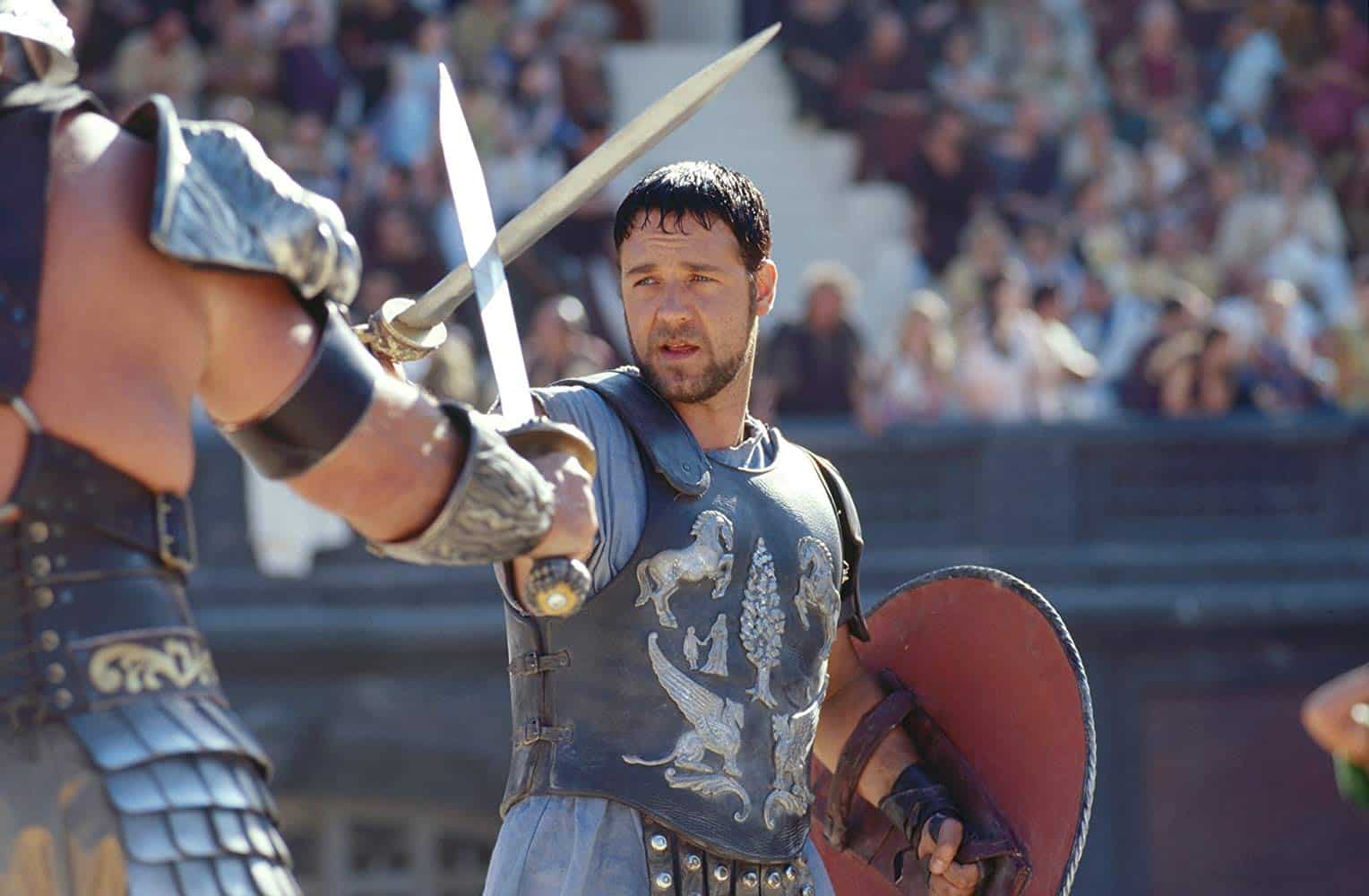
Maximus escapes his captors, though, and becomes a gladiator, fighting his way up through the ranks to get to a point where he can enact his revenge on Maximus for destroying his family.
The Creative License: Maximus never existed. And he certainly didn’t dispatch of the emperor of Rome in front of a Colosseum crowd.
That honor went to Narcissus, while Commodus was taking a bath. Some of the circumstances of Maximus’ life actually follow Narcissus’ semi-closely, and Larsen says he finds it acceptable to merge multiple characters into one for simplicity in some cases. But not in the case of Gladiator, which has a plot that is “nonsensical gibberish,” in Larsen’s words.
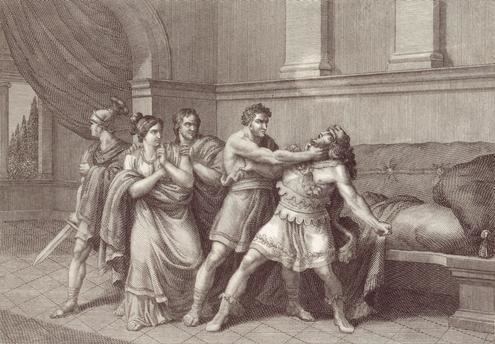
Larsen also says all gladiator films, including Gladiator, get a key component of gladiatorial combat wrong: These dudes weren’t killing each other most of the time.
“We know very definitely that, in the average gladiatorial combat, both people survived. Yet it’s always presented as a fight to the death,” Larsen says. “The economics about that just aren’t viable.”
Did it work? Gladiator grossed more than $450 million worldwide and won five Oscars, including Best Picture.
5. The Patriot (2000)
The Story: Benjamin Martin, a war veteran haunted by his past actions, reluctantly joins the Continental Army against the British to protect his South Carolina home and family.

His guerrilla warfare tactics earn him a nickname—“The Ghost”—and a hero’s journey through to American independence.
The Creative License: It’s kind of fitting this one came out the same year as Gladiator, because it’s basically Gladiator but for the American Revolution. Martin is a composite of a bunch of Revolutionary War characters, and the film is a mostly fictional tale with a framework of truth.
Metzger is okay with minor liberties this and films like it take with history, such as dressing up all the British soldiers in the famous redcoats when, in actuality, the color of the uniform varied greatly by the fighting band involved. But the British, in particular, were a bit put out by the invention of war atrocities committed by their side in the movie—such as burning an entire church full of townsfolk—and none on the side of the colonials.
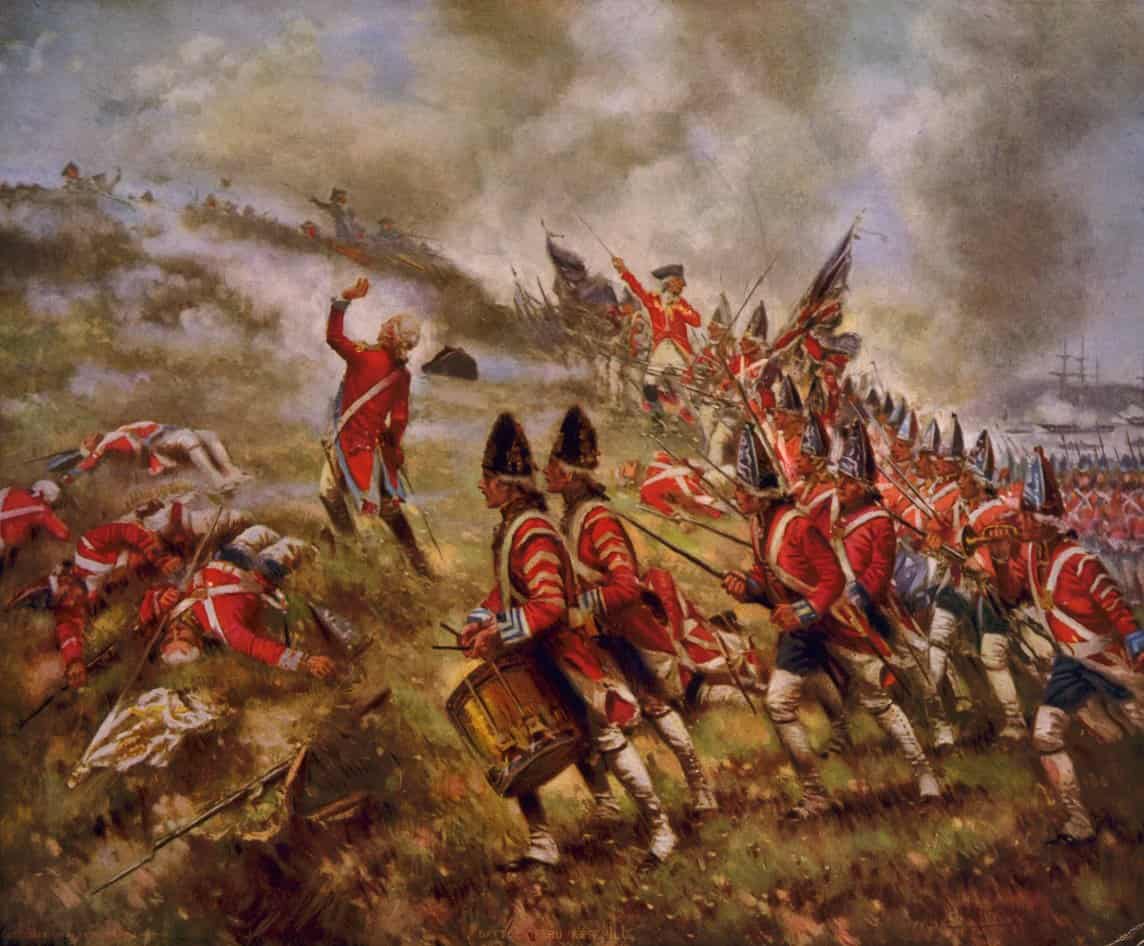
Did it work? It got generally good reviews, and the biggest controversy about The Patriot actually turned out being the discovery of the studio-fabricated movie reviewer, David Manning, who just so happened to really like Columbia Pictures films.
“The studio plastered Manning’s raves over at least four different movie advertisements, including ‘Hollow Man’ and ‘Vertical Limit,’” wrote John Horn of Newsweek. “But Manning’s own life story should be called ‘Charade,’ because he doesn’t exist. Challenged last week by NEWSWEEK about the reviewer’s authenticity, Columbia parent Sony Pictures Entertainment admitted that Manning is a fake, a product of the studio’s advertising department.”
6. Pearl Harbor (2001)
The Story: Two childhood friends from Tennessee both end up as pilots during World War II and fall for the same comely nurse.
Oh, and then the infamous Japanese air attack on Pearl Harbor happens, drawing the United States into the conflict.

The Creative License: Hoo boy. A lot.
One of the main problematic elements in Pearl Harbor, as in The Patriot, is attributing acts that amount to war crimes to combatants on the opposing side of the Americans. The Japanese, in fact, did not actually target medical staff and the base hospital during the attack.
It also falls into a mode of attributing real-life heroics to fictional characters. Namely, Affleck and Hartnett’s characters’ actions during the Japanese attack follow pretty closely to those taken by second lieutenants George Welch and Kenneth Taylor. But nothing else about Hartnett and Affleck’s characters came even close to the truth about Taylor and Welch.

Taylor called the film “a piece of trash … over-sensationalized and distorted,” according to his son. Metzger says films often fall into the trap of introducing romantic subplots to try and up the stakes of a narrative based on actual events.
Sometimes, like in Hidden Figures, it’s fairly benign. Sometimes, like in the HBO movie Iron-Jawed Angels, it can tend to undercut the truth upon which the movie is based. Hilary Swank was playing radical feminist suffragette Alice Paul in that movie, after all—doesn’t exactly jibe with the feminist cause to throw Patrick Dempsey in there as an anachronistic love interest.
Did it work? Critics were not kind, but the movie did end up making about $450 million worldwide. Proving, once again, that what Bay might lack in filmmaking skill, he makes up for in making bank.
7. 300 (2006)
The Story: A hardy band of 300 Spartan warriors uses a bit of fortuitous geography and some kick-butt fighting skills to hold off a Persian army of some 300,000 for as long as it can before finally succumbing to the attack.
The Spartans lose the battle, yes, but their strength, fortitude, and heroism serve as a powerful example for the rest of the Greek forces as they eventually win the war.
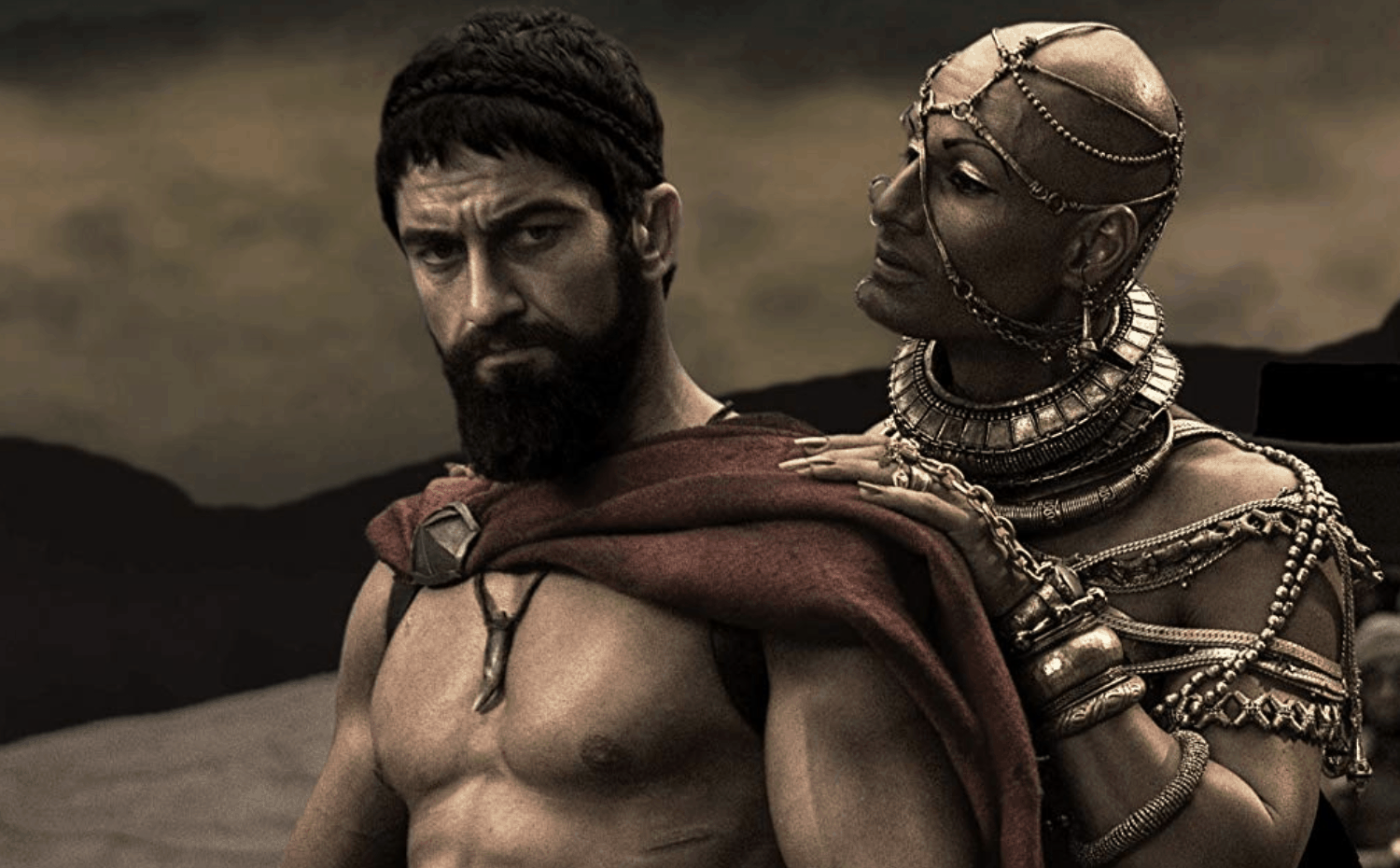
The Creative License: Metzger and Larsen both present 300 as an interesting case of the give and pull between fact and fiction when it comes to historical events.
The setup to the climactic battle, Metzger says, is actually pretty sound. The narrow pass at Thermopylae is well-depicted, as are the Spartan ranks in their tight defensive phalanx and the Persian foot infantry with their wicker spears and shields.
But then, “they’re twirling around, slow-motion camera jerking and things like that,” Metzger says. “Within the same scene, one minute of each other, you can get an attempt to be historically serious as well as this very broad imagination.”
Larsen, too, says that the way Leonidas describes the Spartan battle aesthetic to Ephialtes—fighting as a well-oiled group, rather than a bunch of individuals—and why Ephialtes can’t join them, also falls in line with what history tells us about the ancient city-state. That snub is also the reason Ephialtes betrays the Spartans’ position to the Persians.
Unfortunately, “once the fighting actually happens, they don’t fight that way,” Larsen says. “They fight as individuals running around the battlefield, with no formation whatsoever. The movie tells you they’re going to fight in a line, then halfway through the first battle that disappears and they never go back to it.”
“I tell people it’s as historically accurate as Star Wars,” Larsen says.
Did it work? Critics were split on the film, but audiences ate it up. It even spawned a sequel.
Part of the film’s inaccuracy can be explained away by the fact that it wasn’t necessarily based on a historical narrative, it was based on the Frank Miller graphic novel based on that narrative. Even taking that for a given, though, Larsen says some of the film’s liberties are pretty problematic.
The film fetishizes the Spartans as good, brave, and just while treating the Persians as inherently evil and the rest of the Greeks as weak and cowardly. In reality, there were more shades of grey. It fits neatly into the 21st-century worldview of hypermasculinity that bears very little resemblance to the things that would have motivated a bunch of Spartan warriors in 480 BC.
8. The Imitation Game (2014)
The Story: During World War II, socially awkward genius Alan Turing heads up a British cryptography team tasked with cracking the code that the Germans use in messages sent from their Enigma machine.

Turing designs a machine of his own that, after much frustration and trial and error, succeeds at deciphering German messages, thus saving countless Allied lives and helping in the victory over the Wehrmacht.
The Creative License: According to this “Information is Beautiful” visualization of fabrication in popular historical films, about 59 percent of The Imitation Game is verifiably false or “false-ish.”
A sampling: Turing is presented as humorless, but was actually known for his wit. In the film, Turing decides not to relay a German message that could stop an Allied convoy from being attacked for fear of tipping off the Germans that their code had been cracked when, in actuality, Turing and his team were not in charge of which intelligence was to be acted upon. There was also all sorts of suspicion of Turing being a Soviet spy in the movie that never happened in real life.
In broad strokes, they played up Turing’s social awkwardness and played down his homosexuality. And they played up how unbreakable the Enigma code was before Turing’s machine. The Polish had actually been cracking Enigma messages since 1932.
Did it work? The reviews were fantastic, Benedict Cumberbatch’s performance as Turing was widely lauded, and it made a decent amount of money for a small, independent production.
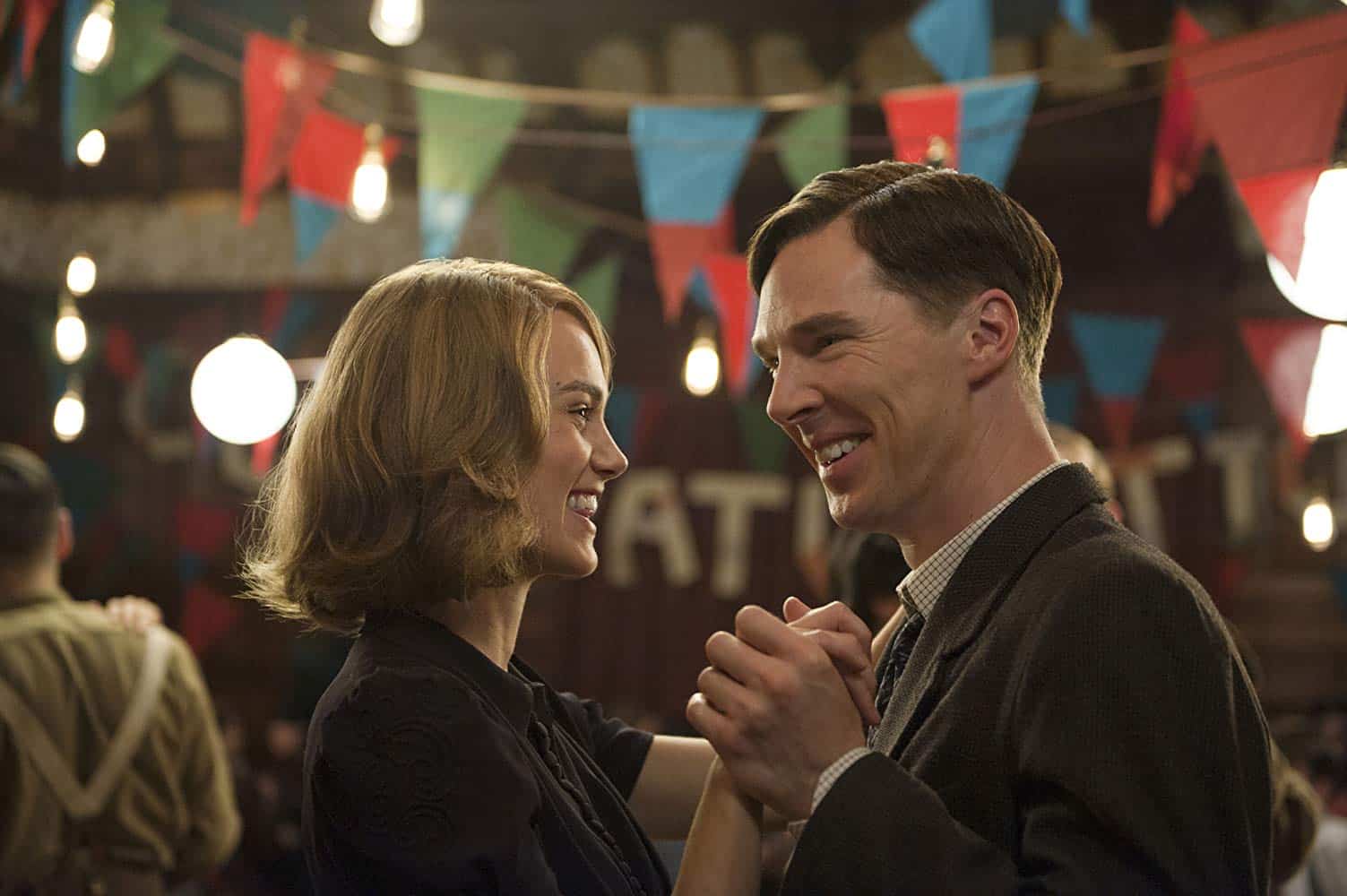
It certainly is better regarded than another historically iffy movie concerning an Enigma machine. 2000’s U-571 overstated the American importance in neutralizing Enigma’s advantage so grossly that screenwriter David Ayer eventually had to apologize for it.
The (Approximate) Truth
Larsen has a saying handy whenever someone asks him if a movie is historically accurate.
“There’s no such thing as a historically accurate film,” Larsen says. “It’s not possible to be 100 percent accurate. So filmmakers start making choices, start to decide what is and is not important. Once they start doing that, they’re veering away from history.”
The important questions, then, are 1) What is the film trying to tell you about this particular story from history? and 2) How accurately does it stick to its intentions?

Critically praised films such as Argo and Lincoln play around a bunch with the timeframe, condensing events to give them more immediacy while still maintaining the larger truth of the story. Larsen says The Witch, while a horror fantasy, is a good example of a film that speaks to the truth of colonial America by really digging into the tenets of Puritanism and using 17th-century source material to inform the characters’ speech patterns and diction.
In that way, a movie like The Witch can ultimately resonate more truthfully than one like Braveheart or 300.
“It’s amazing how often historical action films appeal to the idea of ‘freedom.’ These movies never explain what freedom means to these people,” Larsen says. “They represent this idea that freedom is this unchanging eternal value.”
“It’s quite clear, when you look at it, freedom to a 21st-century American is not what it would be to a Spartan,” continues Larsen. “Rather than trying to use history to teach people how the past is different, what a lot of historical films do is resort to trying to use the past to just tell some story that fits in with contemporary values.”
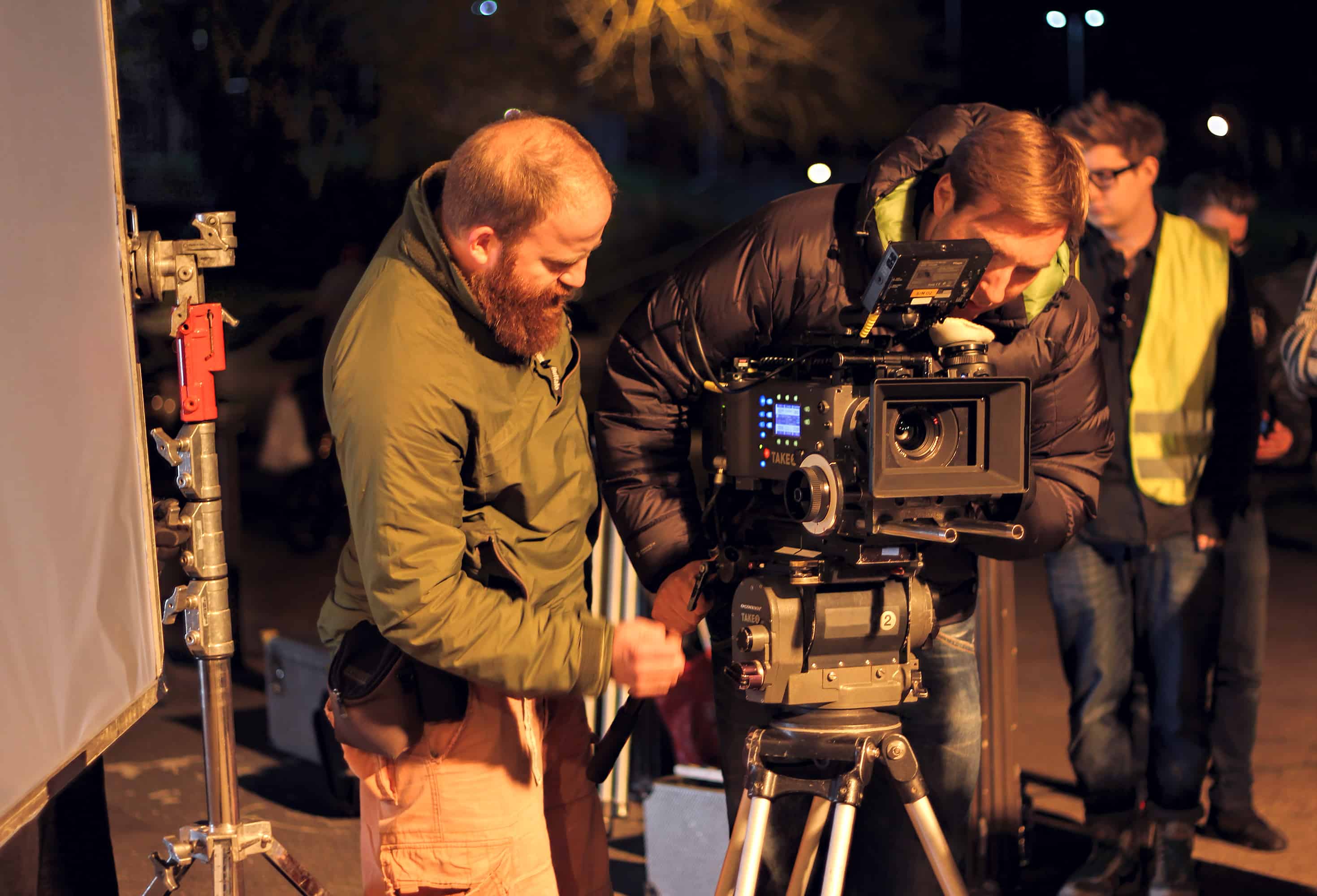
Those looking to “true story” films as their only source of historical knowledge will be misinformed. The key, Metzger says, is to use these movies as jumping-off points from which to learn more about the truth behind the story the movie is conveying.
That way, you know what really happened and what’s mostly fiction.
“We set ourselves up to be disappointed if we expect a movie to be like a nonfiction book, and it would actually rule out some movies that are particularly insightful in other ways,” Metzger says. “They may contain fanciful elements, things that are made up, but they also may have other things that are insightful or get us to think about a really important historical issue that goes beyond whether one detail is true or not.”


